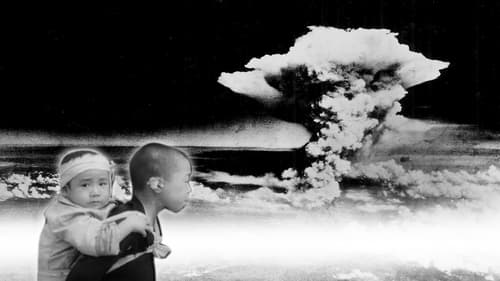
Cinematography
A documentary film taking up the long-living giant Baobab trees as its theme. It is shot by photographer Motohashi Seiichi, known as the director of Alexei and the Spring (Alexei to Izumi) and others. Set in Senegal in West Africa, where modernization in urban areas is advancing and the Baobab trees, which used to be worshipped, are now being logged, the work closely depicts life in the humble village of Touba Toul, where people continue to lead a traditional lifestyle. It is a brilliant film subtly featuring the coexistence of mankind and nature through the modest life of Modou, a 12-year old boy who is the second son of a big family.

Camera Operator
Steven Okazaki presents a deeply moving look at the painful legacy of the first -- and hopefully last -- uses of nuclear weapons in war. Featuring interviews with fourteen atomic bomb survivors - many who have never spoken publicly before - and four Americans intimately involved in the bombings, White Light/Black Rain provides a detailed exploration of the bombings and their aftermath.

Director of Photography
About a woman who has lived a nomadic life playing sanshin music since the age of 9, and made her CD debut at the age of 85.

Director of Photography
180 kilometers down wind of Chernobyl, the village of Budische was evacuated except for 55 older residents who refused to leave and one young man, Alexei who wanted to stay with his parents. This is a simple story of life in Budische 14 years later, as told in voiceover by Alexei. The Belarus village is built around a common spring from which everyone draws water, toting it back to their homes, and to which the women walk to do their laundry outside.

Director of Photography
Before the Chernobyl disaster, Nadja's village was home to 300 peasant families. After evacuation, only 6 households remain and access to the village is shut off. The remaining villagers continue to raise livestock, cultivate crops, and continue with their lives regardless of contamination.

Director of Photography
A woman follows an inner journey from island to island in search of "Pai Pati Roma"

Director of Photography
An anthology film consisting of three linked stories by different directors, all set on an Okinawan island. The first story, 'Aunt Reiko' concerns an opera singer who travels back to her home island to consult a spiritualist about the loss of her voice. The second story, 'Haruko & Hideyoshi' concerns an outsider to the island who is tricked into marrying an island girl after visiting the island god of fertility with her. The final story, 'Bomb Kids' concerns two kids in a punk band who set out to win (or steal) a large amount of money. Linking these stories is the ongoing search for an unexploded WWII bomb, a large model pineapple, and the possibility of a hotel development coming to the island...

Director of Photography
Shiragaki is renowned for its ceramics. This documentary follows people who must overcome physical disabilities to work in the town.

Director of Photography
Interviews with Burakumin in Osaka, victims of discrimination

Director of Photography
A tangerine field stretches along the seashore in Minamata. Minamata disease patients, unable to work on the sea, work hard at growing amanatsu oranges.

Director of Photography
After a handful of groundbreaking films detailing the tragedy and suffering of the mercury-poisoned Japanese town of Minamata, documentary master Noriaki Tsuchimoto revisits the subject of Minamata through the eyes of the celebrated husband-and-wife painting duo Iri and Toshi Maruki. Tsuchimoto follows the Marukis from their quaint homestead studio, where they paint slews of ghastly, psychotropic mural panels depicting the effects of Minamata disease, to the streets of Minamata, where they meet and paint portraits of several victims of mercury poisoning.

Cinematography
Portrait of Japanese youth. Produced for the Japan Foundation.

Cinematography
My Town, My Youth is an inspiring film shot twenty years after the official recognition of the disease and focuses on a group of young people (many born with the disease) as they mobilise to keep their cause visible by organising a concert by the popular enka singer Ishikawa Sayuri.

Director of Photography
An update to the story of Minamata disease, going up to 1976

Cinematography
A medical perspective of Minamata disease in three parts - 1) Progress of Research; 2) Pathology and Symptoms; 3) Clinical Field Trials

Director of Photography
The sea around Minamata was heavily polluted with mercury during the 1950s and 1960s from the Chisso Corporation's chemical factory. This highly toxic chemical bioaccumulated in shellfish and fish in the Yatsushiro Sea which, when eaten by the local populace, gave rise to Minamata disease. The disease was responsible for the deaths and disabling of thousands of residents, all around the Yatsushiro Sea. The marine ecosystem was also extensively damaged.

Cinematography












